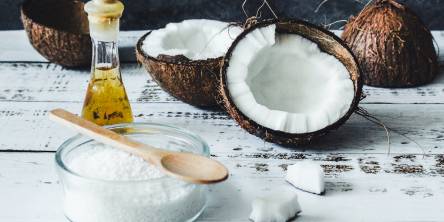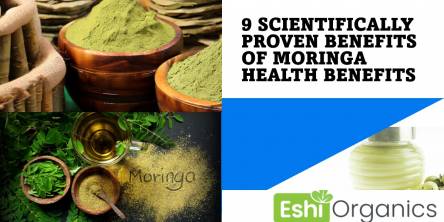3 Easy Steps to Delicious Home Made Yogurt

Making yogurt at home is considered a complex job by most people. "It's a lot of hassle!" reflects Andréa, a big fan of yogurt, who would love to make her own but is not sure how...
Even after a lot of work, it still turns out sour, watery or runny -- something that you were not expecting in the beginning. To make things worse, it sometimes tastes so weird that you can even feel the metallic taste of the pot it's made in. "It just takes away the joy of making something as nutritious and delicious as yogurt." She sadly concludes.
This makes you turn to store-bought yogurt instead which tastes really well as compared to what you can make at home. But then you are unknowingly compromising on the effects it may have on your health. It contains sugars, artificial sweeteners, colors, flavors and thickeners, like gelatin (glue made from animal bones), pectin (a bio-polymer acid, lab made ingredient) and powdered milk. To increase shelf life, it is heat processed which often destroys live bacterial cultures. In short, almost all the healthy, nutritious stuff is processed OUT!
Believe it or not, the secret to making thick, creamy and delicious yogurt lies in the kind of pot used. The conventional metal pots don't let excess water filter out which then calls for straining. Using a pot made of a semi-porous material lets excess water evaporate leaving the yogurt thick and creamy and altogether eliminating the tedious process of straining.
For this reason, I personally use a pure-clay pot -- as it is not only microscopically porous but is also, naturally inert, i.e., it is free from chemicals or metal toxins. So, the natural taste of yogurt is not altered and all you get is thick and delicious home-made yogurt.
Making yogurt in these pots is very easy: Just three steps involved, all you need is milk (raw or pasteurized), live culture (left over yogurt from previous batch), and a pure-clay pot. When making for the first time, you can also use plain whole milk yogurt from the store for the culture, just make sure it has live-cultures (you can see that mentioned in the ingredient list).
Step 1:
Heat the milk: Pour milk into your pot and set it on the stove top. Start the stove on low and in 5 minutes increase to medium. In about 30 minutes, you should see tiny bubbles forming on the surface. When at least a quarter of the top surface is covered in bubbles, the milk has reached temperature, turn stove off. [There's no need to insert a metal or plastic temp gauge, this indicator is reliable and sufficient.*]
Step 2:
Add the live-cultures: Open lid and let the milk cool a bit. Again, no need for a thermometer — with clean hands put your little finger in the milk and if you can hold it there for 5 seconds, the milk is ready for the culture. If you can't hold your finger in for 5 seconds, wait some more. When ready, add the culture to the milk and briefly stir it in.
Step 3:
Set to incubate: Close lid and set the pot in the oven for about 6-8 hours. Unlike other pots, a pure-clay pot is a great heat retainer, so you don’t need to turn the oven on. Just leave the light on and your thick, delicious yogurt will be ready.
Take the pot out of the oven and let it sit outside at room temperature for about 30 minutes. Then refrigerate and serve chilled. There is no need to add any additives, thickeners or straining... the pot does all the work!
So, you can see that the process is pretty simple and the key role is played by the pure-clay pot. You can get pure-clay pots in the USA from Miriam’s Earthen Cookware, they are known for making all their cookware from this 100% non-toxic, all-natural raw material.
There are many health benefits to consuming homemade yogurt (without the processing and storing in plastic!). It is a rich source of essential minerals like Zinc (for cell growth and repair), Calcium (for healthy bones), Phosphorus (works with Calcium to enhance bone strength and growth) and Potassium (for proper functioning of muscles). It is also a great source of multiple B vitamins like Riboflavin or Vitamin B2, B8, B1 and B5, and also a rich source of Thiamin and Foliate.
Now that you know how easy it is to make this delicious and healthy recipe at home, go try your hands on your own home-made yogurt and enjoy healthy cooking!
*Tip: The reason I suggest against checking with thermometer is I've seen inserting a thermometer somehow disturbs the setting of the milk and its eventual culturing, the "bubbles-on-the-surface" indicator is more than adequate.
Similar Articles
Healthy eating is often portrayed as complicated or expensive, but in reality, it’s about balance, awareness, and consistency. Whether you’re juggling a busy schedule, trying to lose weight, or simply aiming for better health, adopting practical eating habits can transform your life.
In today’s rapidly evolving world, telemedicine and virtual health have revolutionized the way healthcare is delivered.
A healthy gut is the foundation of overall wellness, and one nutrient plays a crucial role in maintaining its balance—fiber
Eating a healthy diet usually starts with adding more fruits and vegetables to your plate, but superfood greens take it a step further.
An Ayurvedic detox diet is a holistic approach to cleansing the body, mind, and soul. Rooted in ancient wisdom, this dietary plan focuses on eliminating ama (toxins) through specific foods, herbs, and lifestyle modifications.
Nowadays, not every people take a notice of the fact that they are putting on weight and losing their frame. In fact, excessive fat is considered as one of the well-known catalysts of putting their bodies at risk and making them cope with a variety of physical as well as health problems.
Coconut oil, which used to be known as a cooking ingredient now becomes so popular for its health benefits that it is placed on the top of superfood list. It has the largest consumption and production in tropical countries such as Thailand, Philippines, India, etc.
Due to their many health benefits, organic fruits and vegetables are becoming increasingly popular in today's health-conscious culture. Natural farming techniques that prioritize soil health
Moringa is a miraculous tree. It has many health benefits. This organic tree is packed with multivitamins and antioxidants. It works like a booster in the human body. This multi-functional plant can be consumed in many forms. You can buy moringa powder from various food stores









